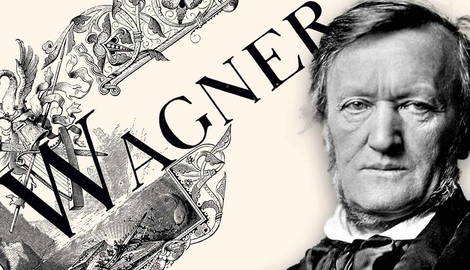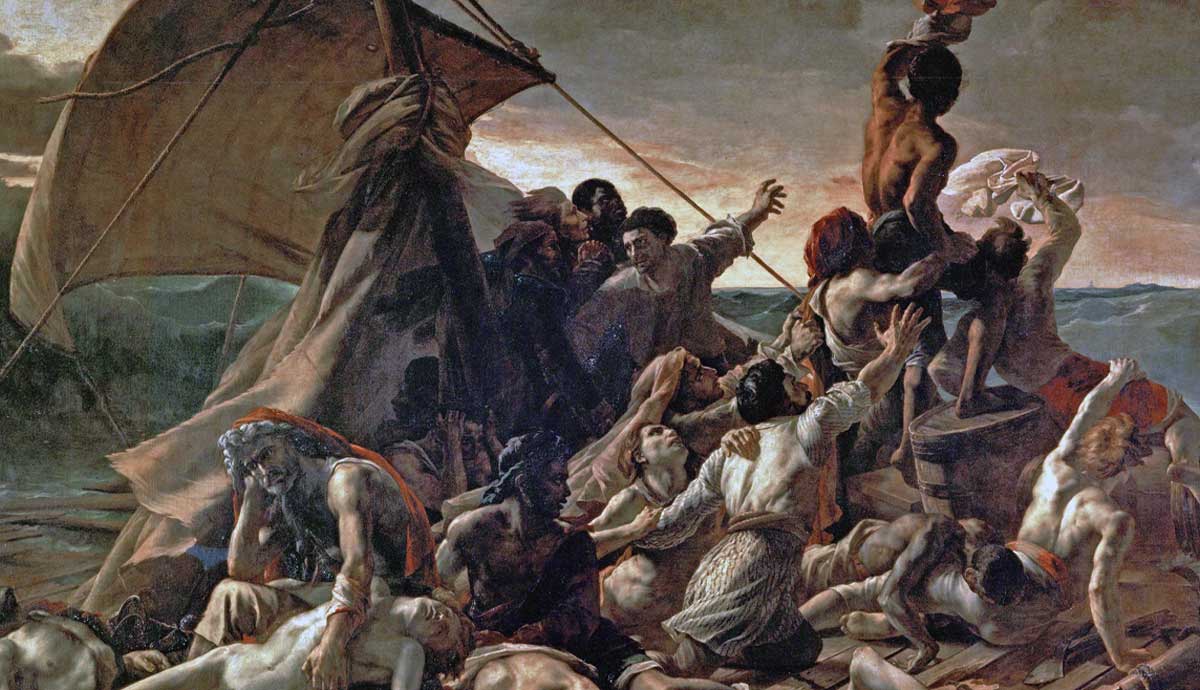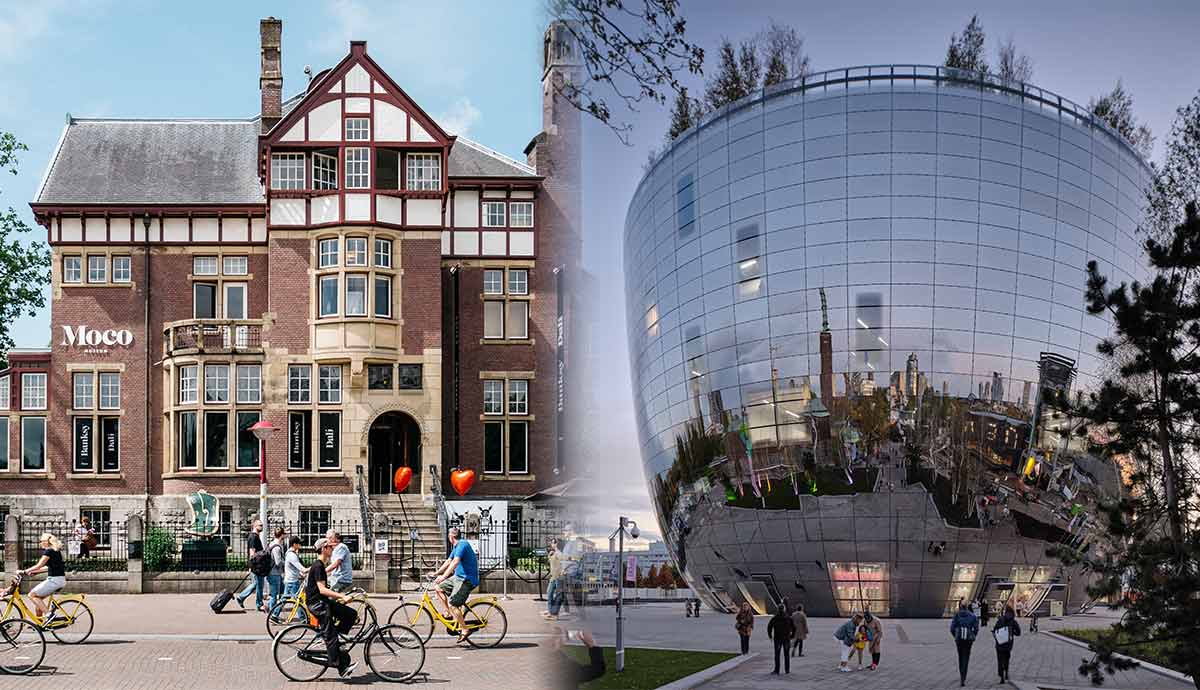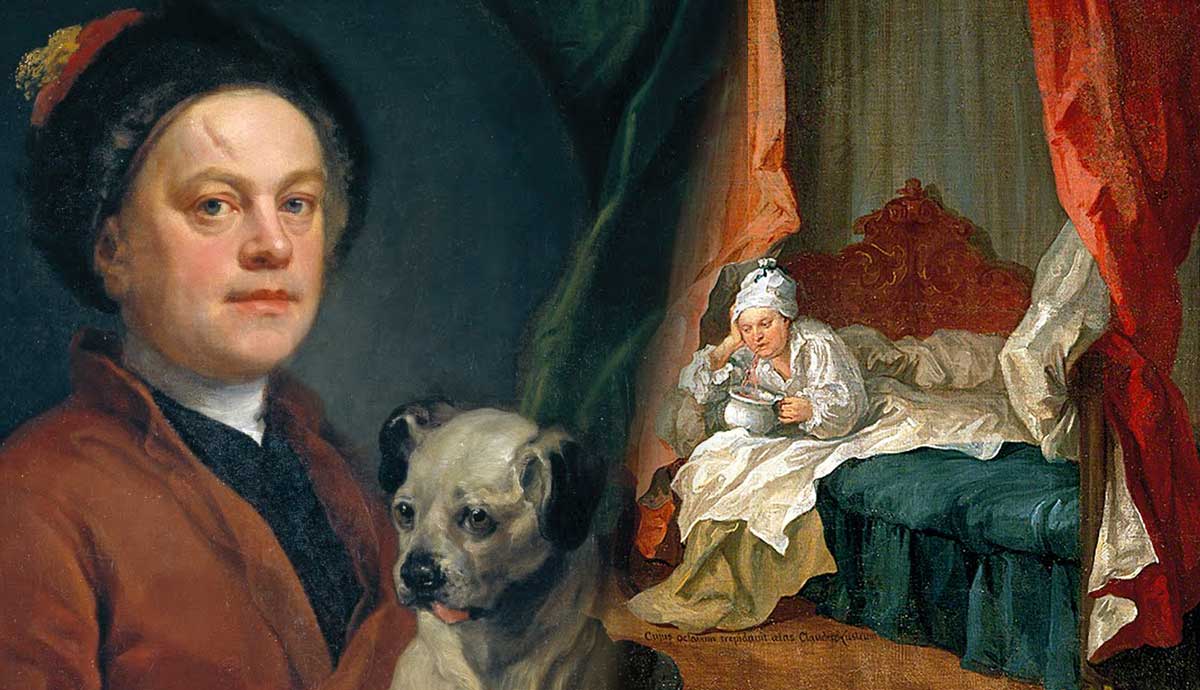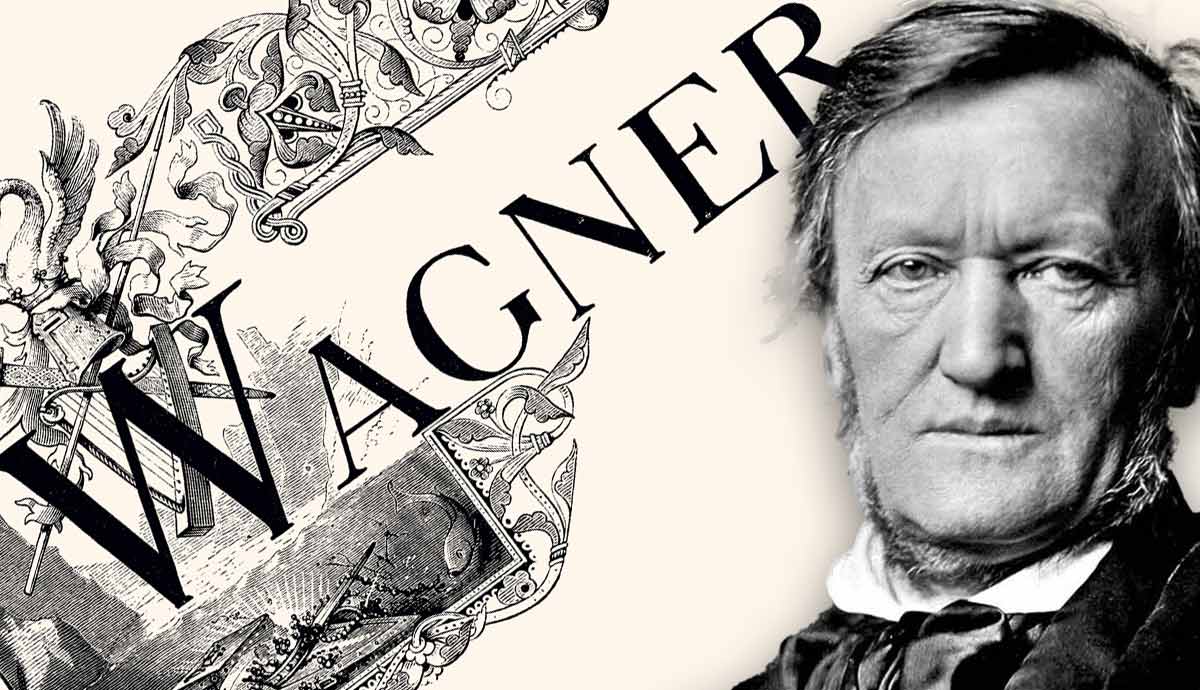
Richard Wagner was a versatile composer but is today known for his epic fifteen-hour Ring Cycle. Although his music was “kidnapped” by the Nazis and this tainted his reputation, he deserves a second chance. Wagner, on many levels, shaped the future of music. Discover more about Richard Wagner in five compositions, some well-known, others obscure, and all equally worthwhile listens.
1. Symphony No. 1 in C Major, WWV 29 (1832)
Richard Wagner only completed one symphony during his lifetime. Evidence of three more symphonies exists: (i) an incomplete Symphony in E major, WWV 35 in which only the first movement is complete and a partially complete second movement exists; (ii & iii) sketches for two more symphonies dated between 1846 and 1847 (WWV 78) exist but they were never composed.
The Symphony in C Major is Beethovenian in its overall form and inspiration. This is one of Wagner’s works from his youth, composed in a space of six weeks at 19. This symphony sounds derivative and dependent on the orchestration of early Beethoven (especially symphonies nos. 1 and 3) and late Mozart. Whether this symphony is a homage to the Classical masters, or a composer trying to get the basics right, it shows a technical mastery of the orchestra at a young age.

Like Beethoven’s symphonies, which he modeled on those of Mozart and Haydn, Wagner’s symphony opens with a slow introduction. It is marked Sostenuto e maestoso, i.e., sustained and majestic, lasting over two minutes (between 02:18 and 06:24). Such a long introduction or Vorspiel (German for prelude or overture) is a prolepsis of the overture that will find a footing in Wagner’s later operas (more on them later). Finally, the introduction gives way to a boisterous Allegro con brio (quick and fiery) at 06:25 with heroic calls in the brass section introducing the primary theme. The movement is in sonata form.
The second movement, Andante ma nontroppo, un poco maestoso (at a walking pace with a hint of majesty), comprises five discernible and contrasting sections with a coda at the end. Three lyrical A-sections (found at 15:16, 21:03, and 24:27 respectively) sandwich two rhythmic, signal-like B-sections (at 18:49 and 23:01). The short coda, starting at 25:50, brings the movement’s ebb and flow between major (B-sections) and minor (A-sections) to an end.

Traditionally, the third movement is a Scherzo and Trio and Wagner follows eagerly in his predecessor’s footsteps, adhering to this norm. There is a sharp contrast between the Scherzo (marked Allegro assai, i.e., quick and lively) and the Trio sections which are marked un poco meno allegro (slightly slower than allegro).
The Scherzo features twice (at 27:05 and 30:10) and alternates with the Trio at 28:30 and again at 31:12. Last, a short coda marked presto, i.e., quick, concludes the movement between 32:33 and 32:51. Thus, the form can be illustrated as an A-B-A-B-coda, with A being the Scherzo and B the Trio.
The last movement (starting at 33:00) is in sonata form like the first movement. During the coda, Wagner switches gears and indicates an even quicker tempo than the initial allegro molto e vivace (very quick and full of life). He indicates a shift to più allegro (much quicker) at 38:40 to keep the excitement flowing until the last moment.
2. Der Liebesmahl der Apostel, WWV 69 (1843)
Wagner left Paris and settled in Dresden in 1843. Resolved not to be an outcast, as was the case in Paris, and integrated himself into the life of Dresden by becoming the conductor of the Dresden Liedertafel. The society was a group of male choruses made up of young merchants and civil servants. Whatever Wagner’s reasons were for seeking such societal integration, Das Liebesmahl der Apostel (The Love-Feast of the Apostles) stands as a unique footnote in a composer’s life and works that were orientated towards the theater.
He drew his inspiration for the text from Acts II when the apostles are visited by the Holy Ghost and gain the ability to speak in tongues. The plot focuses on the apostles who are meeting in Jerusalem in secret to commemorate Christ’s life and work in a secret feast. However, the apostles are filled with fear because a new decree has announced the teachings of the Man of Nazareth are punishable by death.
They are overcome by fear and pray to the Holy Ghost to help them. A miraculous choir of angels is heard, but not seen. Reassured, they continue with their feast and vow to spread the gospel to all nations.
The forces on the premiere at the Dresden Frauenkirche were enormous: 1,200 male singers from all over Saxony were accompanied by an orchestra of over a hundred members. Wagner divided the choruses into groups of unequal numbers to create a blend of sound while the “Voices on High” sang from the church’s copula.

For almost 25 minutes, the orchestra was silent apart from two harps in the background to help keep the choirs in tune. The orchestra was cleverly concealed from view, adding to its dramatic entry — this idea would come to perfection when he built his opera theater in Bayreuth.
When the Holy Ghost enters with the words “Welch Brausen erfüllt die Luft” (“What roaring fills the air!”) at 24:06 the effect is nothing short of electrifying with the roaring and expanding crescendo reminiscent of Berlioz’s music which Wagner admired. The stunned apostles are reassured, rejoice, and enjoy their feast.
Wagner dismissed the piece as a pièce d’occasion, but he recognized it for its dramatic effect, impact, and structure. Some musical ideas have been recycled into later works, such as Tannäuser’s Pilgrim’s Chorus. In his last opera, Parsifal, he revisits ideas found in this somewhat obscure work.
3. Der Ring das Niebelungen, WWV 86a-d (1848-1874)

Anna Russell’s synopsis of Wagner’s Ring Cycle (here) provides an excellent overview of the four operas (part 2 and part 3 are linked separately). It is highly recommended to watch Russell’s synopsis before diving into the finer details of the cycle. The Kennedy Center offers a detailed synopsis of the cycle too. For the curious, Brett Mitchell and the Colorado Symphony provide an overview of the leitmotifs heard in the cycle. There are numerous characters in the operas too.
It should be noted that Wagner is known for his anti-Semitic stances and Adolf Hitler’s love of Wagner’s music was used by Nazi Party in Germany. The party cashed in on this sentiment and Wagner became a Nazi propaganda soundtrack. Unfortunately, this tarnished Wagner’s reputation in modern circles and to this day the connotations are hard to shake off.
We should, however, strive to apply the principles of New Criticism. New Criticism advocates that we should separate the artist and their historical context and enjoy artworks for the sake of the art. However, some critics argue that New Criticism neglects the historical and cultural context and thus leads to a biased reading while overlooking these important factors. The key to conducting an analysis is to employ multiple methods such as hermeneutics and other philosophical viewpoints to arrive at a definitive interpretation.
Unfortunately, applying the principles of New Criticism to Wagner’s music is easier said than done; given how German nationalism tarnished Wagner’s reputation and how this 20th-century political movement led to widespread death. It is also difficult to separate Wagner from his feelings about German nationalism and his anti-Semitic stance. There is a lesson for all of us here: Wagner’s music stands as a cautionary tale against elitism and exclusionist policies in the arts.

Wagner drew inspiration for his monumental Ring Cycle from Scandinavian and Germanic epics, fairytales, and Greek mythology. The four libretti were written in reverse order starting with the last opera, Götterdämmerung, and ending with Das Rheingold. However, the music was composed chronologically beginning in 1848; he completed the project 27 years later in 1874.

His vision for the Gesamtkunstwerk led the special opera house in Bayreuth to host his operas according to his specifications.
Wagner certainly did not want the audience distracted by the conductor and orchestra’s movements. The orchestra pit is hidden from view and the acoustics are designed to allow the singers to sing at a normal volume over the huge orchestra. The orchestra pit is partially underneath the stage and presents unique challenges to the conductor and musicians. Factors like acoustic reverberation make it difficult to synchronize the orchestra with the singers and conductors have to ignore cues from the singers. Additionally, the pit is crowded and dark making movement difficult.
Here, the orchestra’s layout differs vastly from the traditional layout — the first violins are to the right (instead of the traditional left) of the conductor. This strange arrangement of the first violins is likely to direct the sound toward the stage instead of directly to the audience. Cellos, double basses, and harps are split into groups and placed on the sides of the pit. The rest of the orchestra is located underneath the stage. Following this arrangement, allows the sound of the orchestra to blend with the singers’ voices — another application of the Gesamtkunstwerk Wagner was striving for.
The “chasm” created by this unique layout is what Wagner refers to as the Mystischer Abgrund, or mystical chasm.

Wagner also invented the Wagner Tuba — a cross between a French horn and a trombone to bridge the gap between their sound palettes. He used four to depict Valhalla in Das Rheingold.
This synthesis of the arts is most apparent in Siegfried — most notably drawn from the epic poem the Niebelungenlied (Germany) and the Völsunga Saga (Iceland). Wagner pushed the integration of various tales, poems, and sagas even further when he had a creative flash and fused Siegfried’s family tree with that of the gods. He drew inspiration from the Eddas, a collection of stories from pre-Christian Nordic mythology, and intertwined the supernatural world and mortal realms in a new story.
The story spread across four epic operas, revolves around a powerful ring that brings misfortune to the wearers and affects the lives of gods, heroes, and mythical creatures alike.
Das Rheingold
Das Rhinegold introduces the Rhinemaidens’ gold — the source of all the subsequent trouble. Alberich, a Nibelung dwarf, renounces love, steals the Rhinemaidens’ gold, and forges a ring that will give him world dominance. Wotan, king of the gods, captures Ablerich’s ring and gives it to the giants Fafner and Fasolt as payment for building his and Fricka’s new home, Valhalla. Alberich is so unhappy that he curses the ring to bring misfortune to its wearer and sets in motion the tragedies that will befall everyone in the subsequent operas.
Die Walküre
In the second opera, Die Walküre, the focus falls on Wotan’s mortal twin children, Siegmund and Sieglinde. Fricka forces Wotan to organize a duel between the mortal Siegmund and the god Hunding. Wotan’s daughter, the Valkyrie Brünhilde defies her father’s wish not to help the mortal. Yet, Siegmund dies in battle and Brünhilde rescues his sister Sieglinde, who is pregnant with his child. Wotan punishes Brünhilde — he places her in a deep sleep. On a mountain surrounded by fire. Only a fearless hero can break the curse and awaken the Valkyrie.
Siegfried
Siegfried is about the titular hero who awakens Brünhilde from her cursed sleep. He kills the dragon Fafner (who killed Fasolt in the first opera) who transformed himself into the dragon with the help of the magical Tarnhelm. Siegfried seizes the ring and magical helmet (the Tarnhelm) and gives the ring to Brünhilde as a symbol of their love.
Das Götterdämmerung
In the last opera, Das Götterdämmerung, the Gibichungs—Siegfried’s enemies—betray him and turn him against Brünhilde. Hagen, Alberich the Nibelung dwarf’s son, kills Siegfried, but Brünhilde regains the ring. She finally understands the ring’s corruptive power and returns it to the Rhinemaidens. In an irrevocable act of understanding and sacrifice, Brünhilde hurls herself into Siegfried’s funeral pyre. Her sacrificial act has dire consequences and flames consume Valhalla and bring the reign of the gods to an end.
The ring, like the one in JRR Tolkien’s Lord of the Rings, brings tragedy wherever it goes. Its allure leads to betrayal and greed. The cycle explores the themes of absolute power and how it corrupts individuals, love, the inevitable passage of time, and the cycles of life, death, and rebirth.
4. Wesendonck Lieder, WWV 91 (1857-1858)
The Wesendonck Lieder, WWV 91, also known as Fünf Gedichte für eine Frauenstimme (Five Poems for a Female Voice) is one of the most-performed non-operatic works along with the Siegfried Idyll by Wagner. It is a musical setting of five poems by Mathilde Wesendonck, the wife of Otto Wesendonck, one of Wagner’s patrons. He was working on the opera Tristan und Isolde, WWV 90 when he composed the set of Lieder.
The song Der Engel (The Angel) was composed in November 1857, followed by Stehe Still! (Be Still!) in February 1858. Im Treibhaus — Studie zu Tristan und Isolde (In the Greenhouse, a study for Tristan and Isolde), was composed in May 1858. Schmerzen (Sorrows) and Träume–Studie zu Tristan und Isolde (Dreams: a study for Tristan and Isolde), were composed in December 1857.
The songs were usually composed on the same day between the fall of 1857 and the summer of 1858. Wagner’s relationship with Mathilde played an important role in the compositions — deep feelings of pain and longed-for redemptions permeate the cycle.

On the morning of Mathilde’s 29th birthday on December 23, 1857, Dreams was performed by a chamber ensemble of eight instruments with the violin fulfilling the vocal part. This surprise caused Otto some irritation because he was away on business in New York and it set the Zürich society gossipers on fire.
Certain musical ideas here were also used in the opera Tristan und Isolde. Parts of Träume (Dreams, external video) provide the basis of the love duet in Act 2 of the opera. Music from In the Greenhouse is later developed extensively into the prelude to Act 3 of the same opera.
5. American Centennial March, WWV 110 (1876)
The German title of this work is Großer Festmarsch zur Eröffnung der hundertjährigen Gedenkfeier der Unabhängigkeitserklärung der Vereinigten Staaten (Grand Festive March for the Opening of the Centennial Celebration of the Declaration of Independence of the United States of America). Quite a mouthful… For the sake of brevity, it is referred to as the American Centennial March.
But, how much interest did Wagner have in the United States of America? Did he compose it for the sake of love, or did money play a role?
Well, Wagner requested a fee of $5,000 for the composition — a large sum in those days. The proviso was that Wagner dedicated the work to the Women’s Association for the Commemoration Festivities who raised the money for the composer’s fee.
In a case of “anything you can do, I can do better,” Philadelphia needed music that would showcase America as the place during the World Exhibition. The task fell to Wagner because there was a lack of American composers with world renown. Conductor Theodore Thomas, an American-German, commissioned the work. Thomas popularized many of the European composers’ work in America. Thomas also established many orchestras across the USA.
The use of triplets (three notes in the time of one) permeates the work and Wagner chose the tempo specifically to have the triplet motif played accented. The triplet rhythm is constantly moving upwards, symbolizing the American nation’s spirit striving upwards, toward the bettering of themselves. A contrasting lyrical theme balances the triplet rhythm’s fanfare.
The first performance was conducted by Theodore Thomas on May 10, 1878, in Philadelphia.
Final Thoughts

Controversial legacy aside, Richard Wagner is one of the most influential composers of the Romantic Era. Without Wagner, the 20th century would have sounded a lot different, and I think, poorer. He influenced composers such as Gustav Mahler, Richard Strauss, Igor Stravinsky, Arnold Schoenberg, and Anton Bruckner to name a few.
Wagner’s music also teaches a valuable lesson I would like to reiterate—exclusionist policies and elitism do not have a place in the arts—there is space for everyone.
Further Reading
- English translation of Das Niebelungenlied by Margaret Amour, digitized by York University, Toronto, ON, Canada: https://www.yorku.ca/inpar/nibelung_armour.pdf
- A manuscript version of the Niebelungenlied is kept at the Bavarian State Library and on digital display at the Library of Congress, Washington, DC: https://www.loc.gov/item/2021667668/
- Full text of the Völsunga Saga: https://www.voluspa.org/volsungsaga.htm
- Full text, open access copy of the poetic Edda: https://doi.org/10.11647/obp.0308
- To learn more about the unique features of the Bayreuth Festspielhaus and Wagner’s ideas on sound, image, and the Gesamtkunstwerk: https://mahlerfoundation.org/mahler/locations/germany/bayreuth/festspielhaus/
